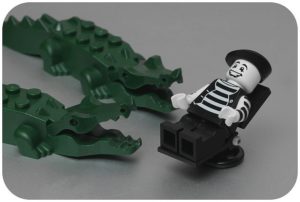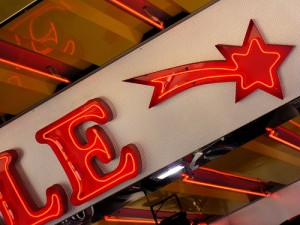Adidas owns multiple trademark registrations in the European Union and the U.S. for its famous three stripe design, and it fiercely protects them. It has filed, and won, several trademark infringement suits, and regularly sends cease-and-desist letters asking brands to stop selling shoes or clothes bearing stripes.
In February 2017, Adidas filed a notice of opposition with the U.S. Patent and Trademark Office Trademark Trial and Appeal Board (TTAB) to the registration of a mark that Tesla Motors was seeking to register for articles of clothing. The mark would have consisted of “three equal length horizontal stylized lines in the manner of a stylized number 3.” The trademark has since been abandoned after an inter-partes decision by the TTAB.
On 17 February 2017, Adidas also filed a trademark infringement and dilution suit against competitor Puma North America Inc. in the district court of Oregon. Adidas claimed that Puma’s new model of soccer cleats, which bear four diagonal stripes on each side, infringes on the Adidas trademark as it is likely to cause consumer confusion as to the source of the footwear. Adidas voluntarily dismissed the case on 28 February 2017, likely following successful negotiations with Puma.
On 14 February 2017, the Barcelona Football Club abandoned its application to register a mark in class 28, for sporting articles, following a notice of opposition filed by Adidas on 31 October 2016, and an inter-partes decision by the TTAB. The abandoned mark consisted of “a square containing seven vertical stripes. The 1st, 3rd, 5th and 7th stripes from the left are blue, and the remaining three stripes are garnet.”
On 17 March 2017, Adidas filed a trademark infringement and dilution suit in the Eastern District of North Carolina, against fashion company Juicy Couture, which came to fame some 15 years ago for creating a velour tracksuit. Adidas claimed that some jackets and pants, bearing stripes on their sleeves and sides, infringe several of its trademarks.
Adidas has won or settled all of the trademark infringement cases it has filed. Will the streak ever end?
The scope of the three-stripe trademark
What exactly do the Adidas trademarks protect? Are all three stripes claimed by Adidas under the trademark? Are all stripes on shoes and clothing, regardless of the number of stripes, claimed by Adidas?
Adidas owns several federal trademark registrations in the U.S. for a mark consisting “of three parallel stripes applied to footwear, the stripes are positioned on the footwear upper in the area between the laces and the sole,” (see here, here, or here). Adidas also owns trademarks for clothing bearing the three stripes (see here) and even for verbal trademarks using the term “3 stripes,” such as the trademark “THE BRAND WITH THE 3 STRIPES.” Does that mean that Adidas has a monopoly for just about every trademark featuring three stripes, every trademark featuring two or four stripes, or even for clothing featuring any number of stripes?
The February 2017 complaint against Puma stated that Adidas has been using the three-stripe trademark on shoes since 1952 and on apparel since 1967. While easily recognizable, Adidas’s three-stripe trademark is also simple: three stripes, often shown diagonally on the sides of shoes, on the sleeves of a training jacket, or the sides of training pants, shorts, or shirts. The three stripes are all of the same width when seen together, but this width varies from trademark to trademark. The distance between each stripe also varies.
In the USPTO Design Search Code Manual, category 26 is for “geometric figures and solids.” 26.17 is for “lines, bands, bars, chevrons and angles” and 26.17.01 is for “straight line(s), band(s) or bar(s).” 26.17.05 is the code for “horizontal line(s), band(s) or bar(s).”
The design search codes for the trademark which Tesla sought to register were 26.17.01 and 26.17. A recent search in the TESS database for a mark with a 26.17. 01 code yielded 89,266 records and a search for marks with the 26.17.05 code yielded 81,820 records. Amongst the 26.17.05 results, 14 were filed by Adidas.
The mark which Tesla sought to register was described in the application as consisting of “three equal length horizontal stylized lines in the manner of a stylized number 3.” Yet the stripes were not similar to Adidas stripes, which are cut in a neat angle. Tesla’s stripes were cut on the side in a soft curve, resembling a Japanese wood beam or roof. The Barcelona Football Club was trying to register as a trademark the stripes which are seen on its own logo, which is itself a registered trademark! Indeed, many sports teams around the world sport stripes on their uniforms. A stripe is a stripe is a stripe. Yet Adidas opposed these two trademark registrations.
Is Adidas going too far?
This is not the first time that Adidas sued a company over the use of stripes on shoes or clothing, even if more or less than three stripes are featured. Adidas sued several European retailers in the late nineties over the use of two stripes on the side of sports clothes, which eventually led to the European Court of Justice ruling in 2008, in Adidas AG and Others v. Marca Mode CV and Others, that Adidas’ competitors could not “be authorized to infringe the three-stripe logo registered by Adidas by placing on the sports and leisure garments marketed by them stripe motifs which are so similar to that registered by Adidas that there is a likelihood of confusion in the mind of the public” (at 32).
While there may be a need for signs which do not have a distinctive character, such as stripes, to be available for competitors, this need “cannot be taken into account in the assessment of the scope of the exclusive rights of the proprietor of a trade mark” (ruling of the Court). The European Court of Justice thus chose to protect the public against any likelihood of confusion.
U.S. fashion manufacturers also encounter legal difficulties when using stripes on garments, and their frustration is mounting. On 3 March 2017, fashion retailer and manufacturer Forever 21 filed a complaint against Adidas, asking the Central District Court of California for a declaratory judgment of non-infringement of trademark. Forever 21 claims that Adidas is now “essentially asserting that no item of clothing can have any number of stripes in any location without infringing Adidas trademarks.” Forever 21 is “[t]ired of operating with a cloud over its head with regard to its right to design and sell clothing items bearing ornamental/decorative stripes” and “has decided that enough is enough… This matter is ripe for a declaratory judgment.” However, Forever 21 voluntarily dismissed the case on 13 March 2017.
Stripes are never out of fashion, and fashion designers frequently use them on the side of pants or jackets. Is this infringement? Forever 21 had claimed that “Adidas should not be allowed to claim that Adidas, alone, has a monopoly on striped clothing.” The retailer filed the suit after receiving yet another cease and desist letter sent by Adidas, this time asking Forever 21 to stop selling clothes bearing four stripes, including a sports bra, tee shirts and pants. Forever 21 claimed that “[a]ny use of stripes on clothing sold by Forever 21 is ornamental, decorative, and aesthetically functional.”
Adidas had sent a similar letter to Forever 21 in June 2015, which claimed that a sweat shirt featuring Snoopy, with stripes on its cuffs, bottom and collar, was infringing. However, varsity jackets, or letterman jackets, traditionally sport stripes in similar places, and Forever 21 indeed described its Snoopy shirt as featuring “generic varsity-style stripe pattern.” Is Adidas too aggressive in enforcing its mark?
A need to police the mark
These cease and desist letters illustrate what trademark owner must do to avoid losing their rights through failure to control use. Section 45 of the Trademark Act states that a mark is abandoned when “any course of conduct of the owner, including acts of omission as well as commission, causes the mark to… lose its significance as a mark.” This includes failing to adequately police the mark against third-party use. Also, the three-stripe mark is famous, thus making trademark dilution another concern for Adidas. In fact, even just the appearance of dilution is a concern, since trademark owners only need to prove a likelihood of dilution, not actual dilution, after the enactment of the Trademark Dilution Revision Act of 2006. Adidas does not want its three stripes to strike out. But is it the general public which ends up losing?
This post has been first published on the TTLF Newsletter on Transatlantic Antitrust and IPR Developments published by the Stanford-Vienna Transatlantic Technology Law Forum




